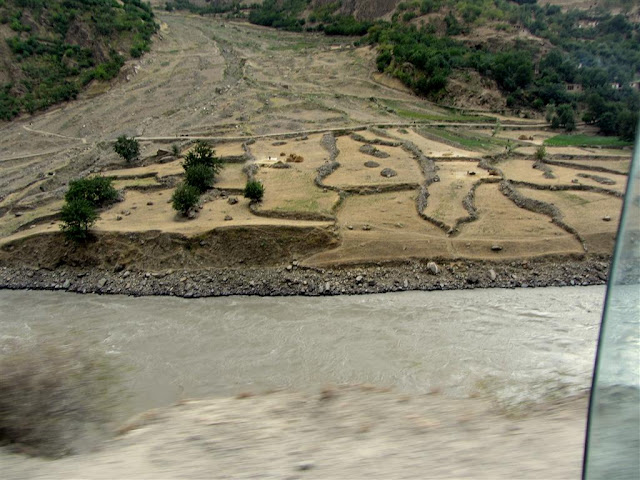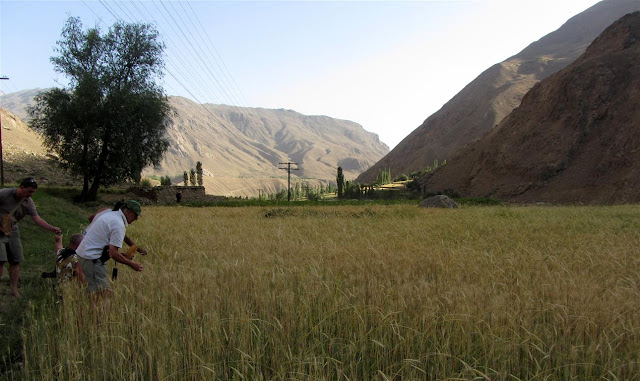 |
| Said and Jan sorting seed |
Once back in Dushanbe we had a lot of sorting, cleaning and recording to do with our collection that numbered over 360 accessions. We were given a room out at the Agriculture Research and Germplasm Centre where we had space to clean and divide up our collection to be split amongst ICARDA, Tajikistan, Russia's, Vavilov Institute and NZ Agriculture.
I'd like to take the opportunity to publicly thank Dr Ken Street and ICARDA for what has been an amazing experience. To everyone at the Ag Academy in Tajikistan, in particular Mirullo Amonulloyen, Mavlon Pulodov and Zebuniso Muminshoyeva who, without them and their invitation it would have not been possible to go and find out how truly beautiful the Tajik people and its lands are. The nuts and bolt of our crew, Said “DJ” Jafar (greatest cook going round), Imondod and Sharif who kept the vans going and did a fantastic job; I don't think I could have changed the pinion gear out of a diff while on the side of the road quite as quick as those guys.
 |
| Zane and Sergey hard at work |
To the collection team of Jose Piggin, Jan Konopka, Zane “Jet” Webber and Courtney “Omada Jon” Fullilove who made this trip that much more enjoyable and informative because of their involvement, thanks for your company on this fantastic adventure.
It is at this point special mention must be made to Sergey “Scout” Shuvalov who has been our guide and interpreter during our stay. His good humour, knowledge of the area and professional nature were second to none and complemented this trip perfectly. It is obvious to me now why Ken and many of the Tajik people who were involved in this trip greeted him warmly and held him in high regard. Thank you.















































